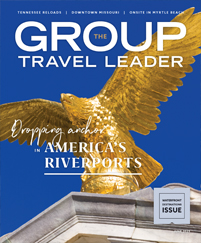With record-low unemployment and a soaring stock market, the American economy seems to have finally shaken off the cobwebs of the past decade, promising growth for the tourism industry. But there is also potential disruption on the horizon, from fast-paced technological change to the wave of millennials in the workplace and a re-evaluation of gender roles and social norms. The Group Travel Leader spoke with the heads of four tourism industry associations to get their perspectives on these and other forces shaping the tourism landscape.
Carylann Assante, Executive director, Student and Youth Travel Association (SYTA)
Terry Dale, President and CEO, United States Tour Operators Association (USTOA)
Pam Inman, President, NTA
Peter Pantuso, President and CEO, American Bus Association (ABA)
The dollar is very strong right now, and the stock market is at historically high levels. Are these factors influencing the American travel buyer: how much they travel, where they travel and how much they spend? Are they having an impact on inbound travel to the United States?
Dale: Everything I have heard from our members paints a very robust picture. For the first time in my seven years with USTOA, there is complete consensus across the board: Everyone is indicating double-digit growth or strong single-digit growth.
I have heard anecdotally that our inbound members have seen softening on their inbound numbers. But I don’t think that it’s as serious as we were anticipating earlier this year.
Inman: The strong dollar gives Americans an edge when they travel abroad and helps with domestic travel as well. We have a tour operator who recently told us that his clients use their stock portfolios as a barometer for travel, and when the market is up, they hit the road.
A strong dollar is not necessarily a positive draw for international travelers considering a visit to the United States, especially when you couple that with the travel ban or the sentiment behind it. So we may not see much growth in international inbound.
Pantuso: I can tell you that a lot of our bus companies are really busy. They continue to have a great year. A lot of them are telling me it’s been one of the busiest times ever. So I assume that translates into more travelers.
Inbound numbers seem to be down a little bit. It’s hard to tell, though. The dollar is strong, so that keeps a few people away. Some people talk about the Trump factor, but it’s hard to know if that’s an issue or not. It’s hard to tell on a short-term basis what is happening.
Assante: We are definitely seeing a positive increase in domestic student travel. U.S. students are still traveling, and we’re seeing them do outbound travel to Canada and to Europe.
In terms of Canadian students, which is the second-largest market of students traveling in the United States, we’re seeing flat travel from the Ontario school districts. Some of that is in response to perceptions around the travel ban or political perceptions. But we’re still seeing steady travel from the schools in Quebec and Montreal, as well as other schools around Canada.
We have seen some inbound student groups choosing Canada, Ireland and England instead of the U.S. for travel to English-speaking countries. There’s some concern over the safety of students in the U.S. So it’s a combination of the strong dollar, the perception of how safe it is and some response to administrative policies.











